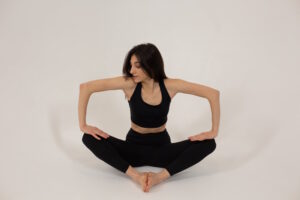
In the ever-evolving world of fitness, the quest for a strong and resilient core remains a constant pursuit. Amidst a plethora of exercise options, two contenders often stand out: Pilates and traditional core workouts. Both avenues promise to bolster core strength and stability, but which is truly more effective? In this exploration, we dissect the nuances of Pilates and traditional core workouts, examining their relative merits, benefits, and impact on core strength to uncover the answer to the compelling question of effectiveness.
Is Pilates Better Than Core Workout?
Pilates and traditional core workouts approach core strengthening from different angles, each offering unique advantages. Pilates is renowned for its holistic methodology, intertwining controlled movements, mindful breathing, and precise muscle engagement. This nuanced approach not only targets superficial core muscles but delves deep into stabilizing musculature, promoting balanced development. Traditional core workouts, on the other hand, often emphasize isolated movements like crunches and planks to engage specific muscle groups.
Pilates’ emphasis on mind-body connection and fluid motion can lead to enhanced body awareness and improved posture, factors that contribute to comprehensive core strength. Traditional core workouts can yield results through targeted exercises, but they may overlook the interconnected nature of core muscles. Pilates’ integrative approach may offer a more comprehensive and functional approach to core strengthening.
Are Pilates More Effective Than Regular Workouts?
When assessing effectiveness, it’s important to consider the multifaceted nature of core strength. Pilates stands out due to its focus on balanced development, functional movement, and mind-body synergy. Traditional core workouts often center on high-intensity movements that can lead to quick muscle fatigue and potential strain.
Pilates promotes endurance, stability, and flexibility by engaging the deep core muscles, enhancing overall core functionality. Regular core workouts, while effective in targeting specific muscle groups, may not prioritize the holistic approach that Pilates embodies. Pilates’ methodology fosters a foundation of strength that extends beyond superficial aesthetics, making it a compelling option for those seeking enduring core health.
Which Is Better for Core: Yoga or Pilates?
Yoga and Pilates share commonalities in their focus on breath, posture, and alignment, making both practices beneficial for core development. However, Pilates holds a distinct advantage in terms of precision and targeted engagement. While yoga integrates core work within its poses, Pilates dedicates entire exercises to core muscle activation, ensuring a concentrated and deliberate effort.
In Pilates, movements like the “Hundred” and the “Teaser” intricately challenge core muscles, promoting a comprehensive strengthening effect. Yoga, while valuable for flexibility and mindfulness, may not offer the same level of targeted core engagement as Pilates. Therefore, for those primarily seeking core strength, Pilates often emerges as the more effective choice.
Is Pilates the Most Effective?
Effectiveness ultimately hinges on individual goals and preferences. Pilates’ holistic approach, mindful movement, and emphasis on balanced core development make it highly effective for those seeking functional strength, improved posture, and body awareness. The methodical progression of Pilates exercises allows for gradual adaptation and growth, reducing the risk of injury.
While Pilates shines in its core-strengthening endeavors, it’s essential to recognize that fitness is a diverse landscape. Traditional core workouts and other practices like yoga also offer benefits that may align more closely with certain individuals’ needs. The “most effective” choice varies based on one’s objectives, physical condition, and personal inclinations.
In our exploration of Pilates vs. traditional core workouts, we’ve illuminated the nuanced effectiveness of each approach. Pilates’ holistic methodology, deliberate engagement, and emphasis on comprehensive core development position it as a compelling contender for those seeking enduring strength and stability. However, the realm of fitness is as diverse as it is dynamic, and individual preferences and goals play a pivotal role in determining the most effective path to core vitality.